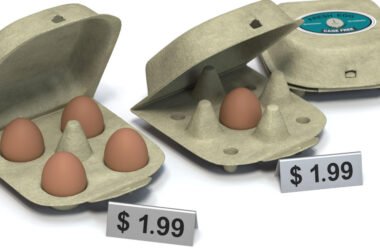A widely observed inflation measure indicated ongoing signs of weakening in October, which is positive news for the Federal Reserve as it tries to assess whether further action is necessary to fully address rapid price hikes.
The Personal Consumption Expenditures inflation measure, which the Fed refers to when stating its goal of averaging 2 percent inflation over time, rose by 3 percent over the year through October. This was a decrease from the previous month’s 3.4 percent and was in line with economists’ expectations. Prices remained unchanged compared to the previous month.
When excluding volatile food and fuel prices to get a clearer view of underlying price pressures, inflation rose by 3.5 percent over the year. This was a decrease from the 3.7 percent reported previously.
The recent indication of slowing price increases coincided with other positive news for Fed officials: Consumer spending has slowed. A measure of personal consumption increased by 0.2 percent from September, marking a slight deceleration from the previous month.
The report could provide important insights to Fed officials as they prepare for their final meeting of 2023, scheduled for Dec. 12-13. While investors widely anticipate policymakers to maintain borrowing costs at the meeting, central bankers will release a new set of economic projections that could offer hints about their future policy plans. Jerome H. Powell, the Fed chair, will also hold a press conference.
“They’re going to want to remain cautious about declaring ‘Mission Accomplished’ too soon,” said Omair Sharif, founder of Inflation Insights. Nevertheless, “we’ve had a string of really good readings.”
Policymakers have been closely monitoring both inflation and consumer spending to assess their next steps. They have already raised interest rates to a range of 5.25 to 5.5 percent, the highest level in more than two decades. Consequently, many officials have indicated that it may be time to pause and monitor how the policy unfolds.
John C. Williams, the president of the Federal Reserve Bank of New York, hinted in a speech on Thursday that he anticipates inflation will moderate sufficiently for the Fed to halt further interest rate hikes, although officials could raise interest rates further if the data were to surprise them.
“If price pressures and imbalances persist more than I expect, additional policy firming may be needed,” Mr. Williams said. He reiterated his assessment that the Fed is “at, or near, the peak level of the target range of the federal funds rate.”
The economy has proven to be more resilient to the higher borrowing costs than anticipated, which is one reason why the Fed has maintained a cautious stance. If strong demand enables companies to continue raising prices without losing customers, it could be challenging to completely eliminate inflation.
However, recent indications that consumers and companies are finally becoming more cautious have been well-received at the Fed.
“I am encouraged by the early signs of moderating economic activity in the fourth quarter based on the data in hand,” Christopher Waller, a Fed governor, stated this week. Yet, he added that “inflation is still too high, and it is too early to say whether the slowing we are seeing will be sustained.”
Mr. Sharif pointed out that discussion on Wall Street has centered on when the first interest rate cut might occur, and the Fed’s forthcoming economic projections should provide insight. Some of Mr. Waller’s remarks this week sparked speculation that cuts could arrive relatively early next year.
However, “you don’t want to get too far ahead of yourself, for now,” Mr. Sharif said, noting that the data has improved in the past before deteriorating again. He believes that the Fed will likely refrain from discussing rate cuts too assertively until they have data for late 2023 and early 2024 in hand.
“I just think they’re going to want to remain a little bit cautious right now,” he said.








